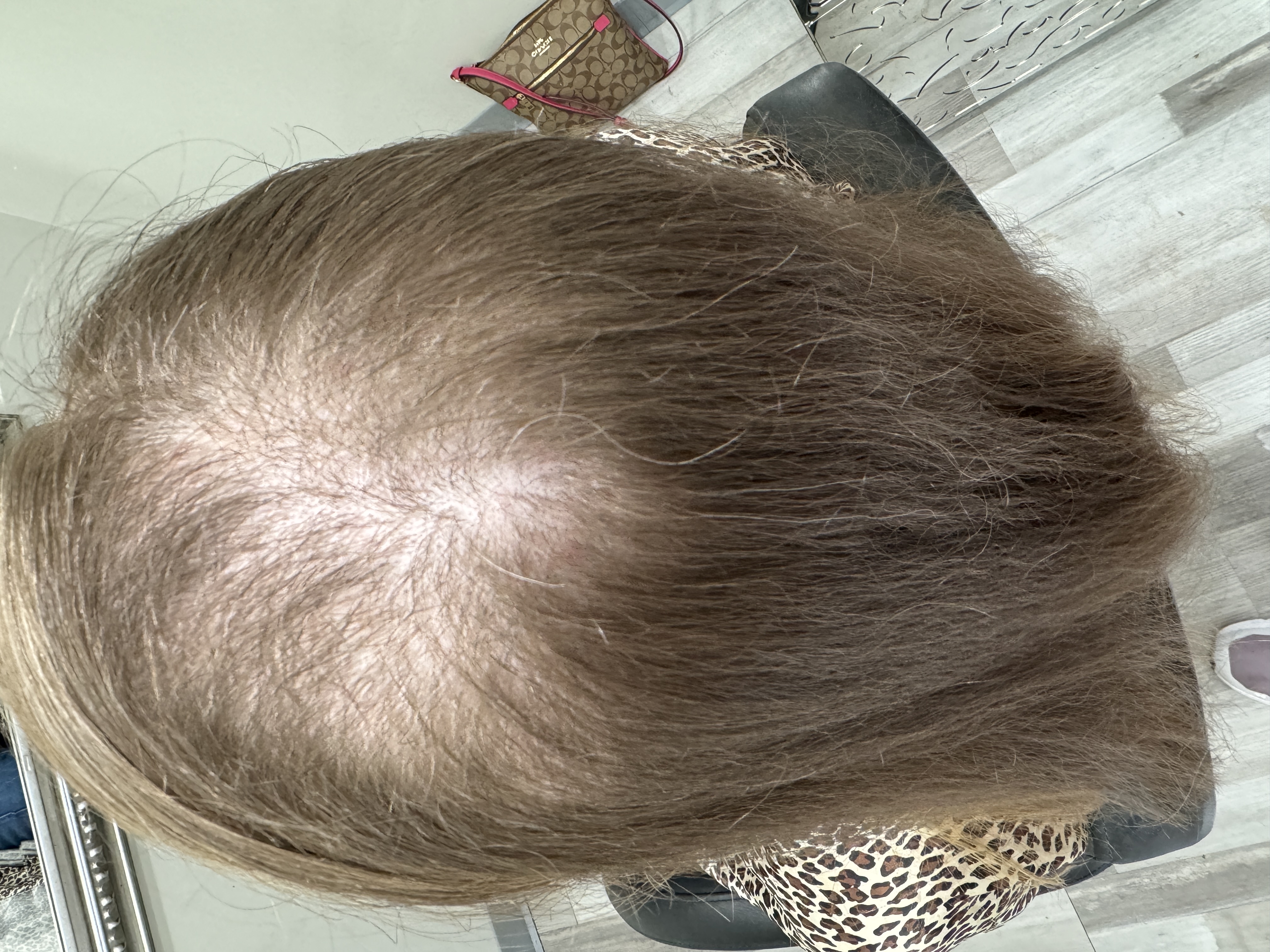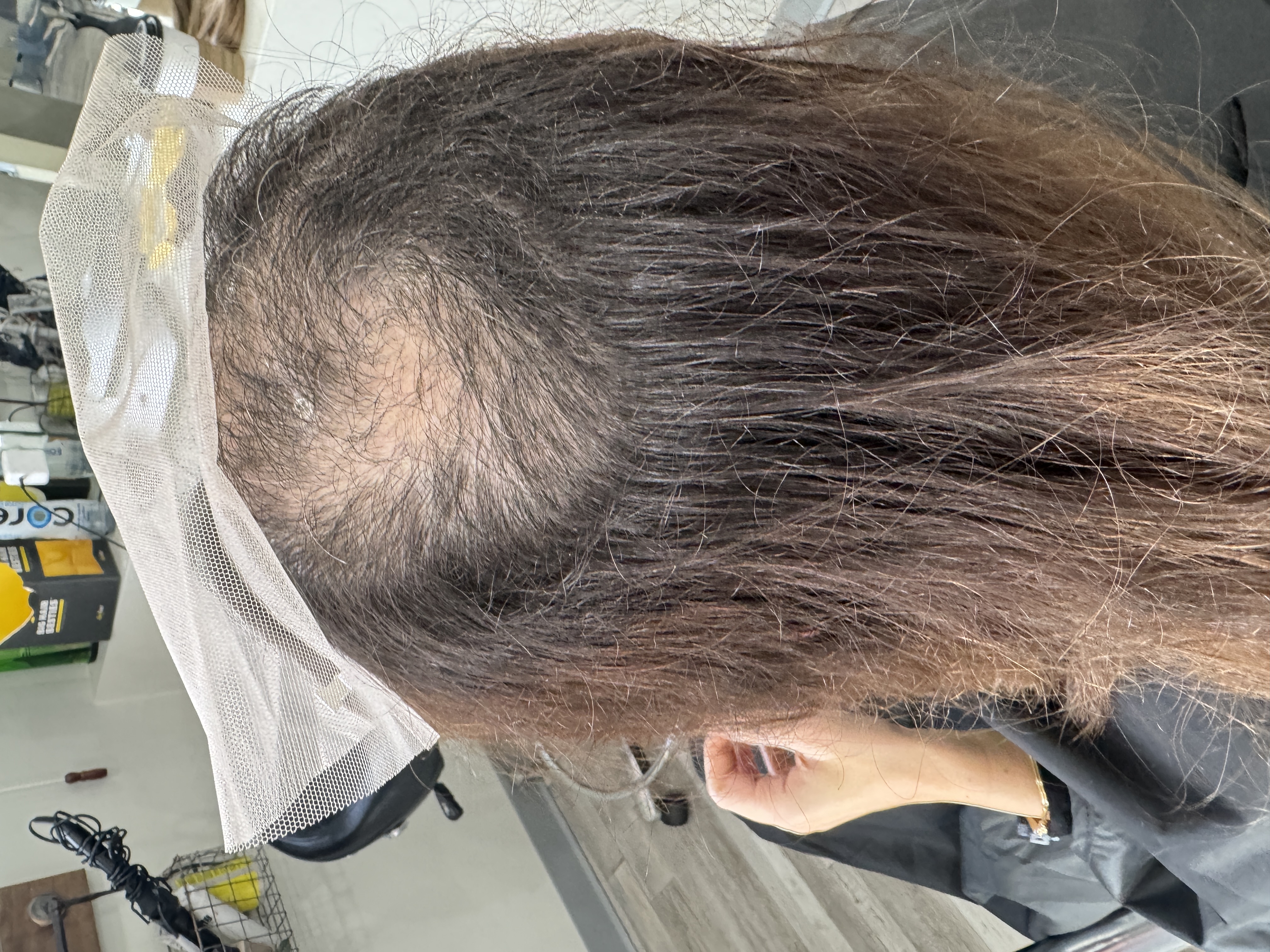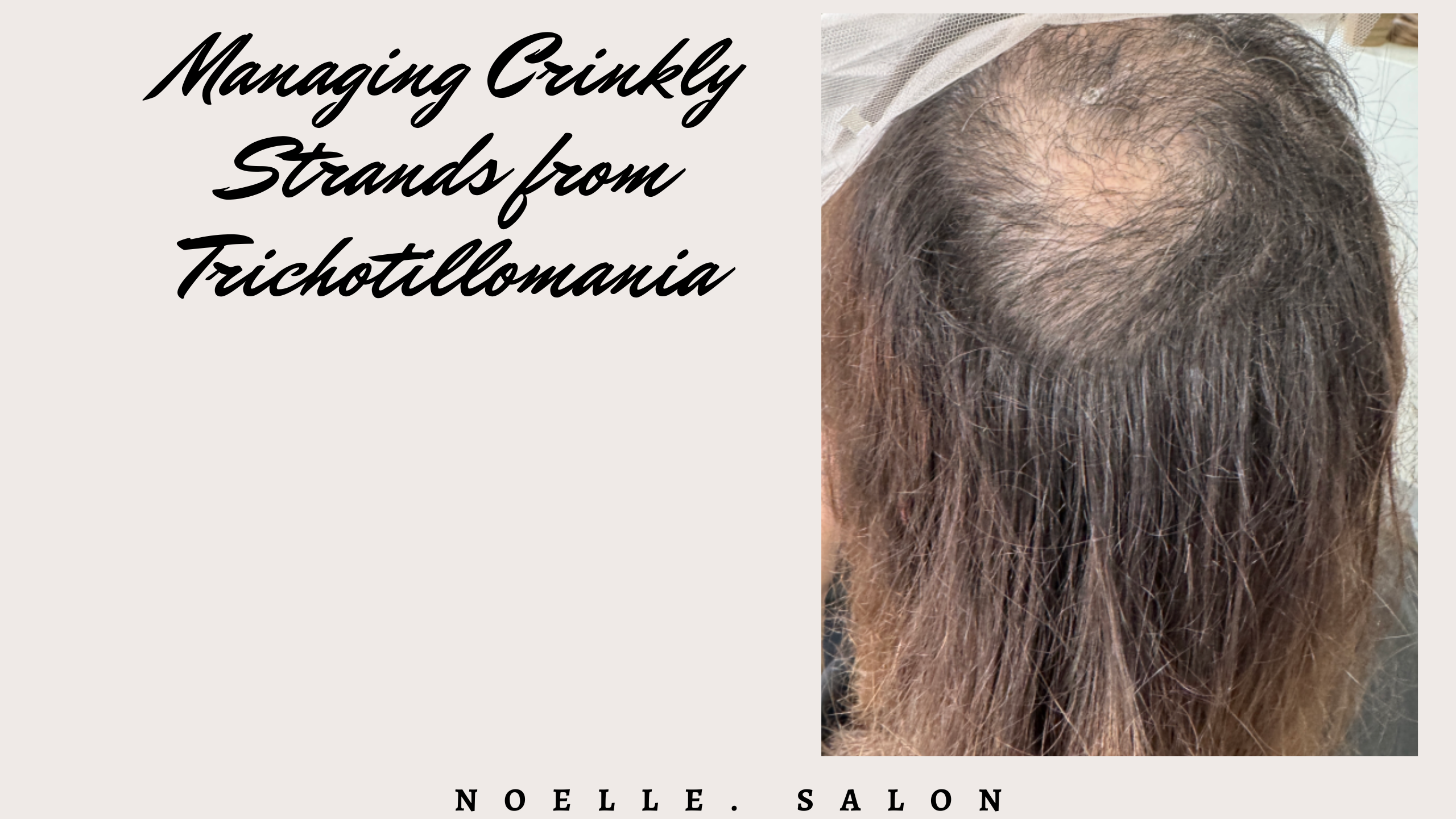Managing Trichotillomania Crinkly Hair Strands: Helpful Tips
-
Trichotillomania is a mental health condition characterized by compulsive hair pulling, which can have severe negative effects on mental health and quality of life.
-
Coping, such as behavioral therapy and medication, can help manage trichotillomania and improve well-being.
-
Hair pulling is often a coping mechanism for dealing with stress, boredom, or negative emotions.
-
Treatment options for trichotillomania include professional therapies like cognitive-behavioral therapy (CBT) and medication like selective serotonin reuptake inhibitors (SSRIs).
-
It is important to seek professional help and support from family and friends when dealing with trichotillomania.
-
Developing self-help techniques, such as identifying triggers and finding alternative behaviors, can also aid in managing trichotillomania.

Introduction
Trichotillomania, also known as hair-pulling disorder, is a mental health condition that affects individuals who have a compulsive urge to pull out their own hair, sometimes leading to trichophagia, where they may eat the hair they pull out. This condition can have severe negative effects on a person's mental health and overall quality of life. The act of hair pulling often serves as a coping mechanism, providing temporary relief from stress, boredom, or negative emotions. However, the long-term consequences can be damaging, leading to hair loss, scalp damage, and significant distress.
Managing trichotillomania requires a comprehensive approach that includes understanding the condition, identifying triggers, seeking professional help, and developing effective coping strategies. Treatment options for trichotillomania range from professional therapy techniques, such as cognitive-behavioral therapy (CBT), to medication like selective serotonin reuptake inhibitors (SSRIs). Individuals with trichotillomania must reach out for support from healthcare professionals, family, and friends to navigate this condition and improve their well-being.
In this blog, we will delve deeper into understanding trichotillomania, identifying its symptoms, exploring its causes, and discussing effective treatment strategies. Whether you are someone dealing with trichotillomania or know someone who is, this blog aims to provide valuable insights and resources to cope with this challenging condition and improve overall mental health.

Understanding Trichotillomania
Trichotillomania is a mental health condition that falls under the category of obsessive-compulsive disorder (OCD). It is characterized by recurrent hair pulling, resulting in hair loss. This condition often involves compulsions and can begin in childhood or adolescence and can persist into adulthood. Trichotillomania can have a significant impact on a person's mental health, leading to feelings of shame, embarrassment, and low self-esteem. It is important to seek professional help and support to manage trichotillomania symptoms and improve overall well-being.
Defining Trichotillomania and Its Focus on Hair
Trichotillomania is a mental health condition characterized by the strong urge and compulsive desire to pull out one's own hair. This behavior often focuses on the scalp, eyebrows, eyelashes, and other areas with hair. The act of hair pulling provides a sense of relief or gratification for individuals with trichotillomania, but it can lead to significant distress and negative consequences.
The scalp is commonly affected by trichotillomania, resulting in patchy hair loss and potential scarring. The repeated pulling of hair can cause damage to the hair follicles and lead to bald spots or thinning hair. In some cases, individuals may also pull out their eyelashes, resulting in sparse or missing lashes. Trichotillomania can impact a person's self-esteem, social interactions, and overall quality of life. It is essential to seek appropriate treatment and support to manage this condition effectively. I have been told that many people search for coarse hairs to pick which initially gives positive feelings that later turn to negative feelings once hair picking is done.
The Psychological Impact of Trichotillomania
Trichotillomania can have a profound psychological impact on individuals who experience it. The act of hair-pulling may initially provide a sense of relief or satisfaction, but it often results in negative emotions and distress. Individuals with trichotillomania may experience feelings of stigma, shame, guilt, embarrassment, and low self-esteem due to the visible effects of hair loss.
The psychological impact of trichotillomania can significantly affect a person's overall quality of life. It may lead to social withdrawal, difficulties in relationships, and impaired performance at work or school, particularly in young children. However, with appropriate treatment and support, individuals with trichotillomania can experience positive changes in their mental health and well-being. It is important to seek professional help and develop effective coping strategies to manage this condition and improve overall psychological well-being.

Trichotillomania Symptoms
Trichotillomania can manifest in various symptoms related to hair pulling. According to the Diagnostic and Statistical Manual of Mental Disorders, these symptoms include recurrent pulling out of hair, resulting in hair loss, repeated attempts to decrease or stop hair pulling, and significant distress or impairment in social or occupational functioning. It is important to recognize these symptoms and seek professional help for an accurate diagnosis and appropriate treatment. Identifying trichotillomania symptoms is the first step towards managing this condition effectively and improving overall well-being.
Recognizing the Signs in Yourself or Others
Recognizing the signs of trichotillomania in yourself or others can be crucial in seeking appropriate help and support. Some common signs that may indicate trichotillomania include noticeable hair loss, the presence of coarse or kinky hairs, and the presence of bald spots or thinning areas on the scalp. Individuals with trichotillomania may also exhibit behaviors such as constantly touching or playing with their hair.
If you suspect that you or someone you know may have trichotillomania, it is important to encourage open communication and offer support. It can be helpful to consult with a healthcare professional, such as a dermatologist or mental health therapist, who can provide an accurate diagnosis and guide you toward effective treatment options. Remember, seeking help is the first step towards managing trichotillomania and improving overall well-being.
The Specifics of Crinkly Hair Strands
In trichotillomania, individuals may develop a habit of pulling out their hair, which can result in the presence of crinkly hair strands. Crinkly hair strands occur due to the repeated pulling and fracturing of the hair shafts. These strands may feel rough or irregular when touched.
The act of pulling hair in trichotillomania is considered a bad habit that individuals often struggle to control. It can become a repetitive behavior, serving as a coping mechanism for stress, anxiety disorder, or other negative emotions. However, this habit can have detrimental effects on a person's mental health and well-being. It is important to seek professional help and support to overcome this habit and develop healthier coping strategies.

Causes Behind Trichotillomania
The exact causes of trichotillomania are not yet fully understood. However, several factors may contribute to the development of this condition. Psychological and genetic factors are believed to play a role, with some individuals having a predisposition to impulsive behaviors or mental health conditions. Environmental triggers and stressors can also contribute to the onset and exacerbation of trichotillomania. Understanding the underlying causes of trichotillomania can help individuals and healthcare professionals develop effective treatment plans and strategies for managing this condition.
Psychological and Genetic Factors
Psychological and genetic factors are believed to contribute to the development of trichotillomania. Individuals with trichotillomania often experience a negative psychological impact, including feelings of shame, guilt, and low self-esteem. These negative emotions can fuel the compulsive behavior of hair-pulling.
Genetic factors may also play a role in trichotillomania. Some individuals may have a genetic predisposition to impulsive behaviors or mental health conditions, making them more susceptible to developing trichotillomania. Additionally, individuals with body dysmorphic disorder, a condition characterized by a distorted perception of one's appearance, may be more prone to developing trichotillomania as a means of coping with perceived imperfections.
Understanding the psychological and genetic factors associated with trichotillomania can help guide treatment approaches and interventions. It is important to address both the psychological and genetic aspects of trichotillomania to promote effective management and improved quality of life.
Effective Treatment Strategies
Managing trichotillomania requires a comprehensive treatment approach that addresses the underlying causes and provides coping mechanisms for individuals. Effective treatment strategies for trichotillomania include professional therapies and medications that can help individuals manage their symptoms and improve their overall well-being. These treatment options are designed to provide support, guidance, and tools for individuals to overcome the challenges associated with trichotillomania.
Professional Therapies for Trichotillomania
Professional therapies, such as cognitive behavioral therapy (CBT), have shown efficacy in treating trichotillomania. Cognitive behavioral therapy (CBT) aims to help individuals identify and challenge negative thoughts and behaviors associated with hair pulling. It provides coping strategies, stress management techniques, and habit reversal training to help individuals break the cycle of hair pulling.
Hypnotherapy is another professional therapy that has been used as a complementary treatment for trichotillomania. It aims to modify subconscious patterns and behaviors associated with hair pulling through guided relaxation and suggestion techniques.
Engaging in professional therapies can provide individuals with the necessary tools and support to overcome trichotillomania and develop healthier coping mechanisms.
Medications
In addition to professional therapies, medications can also play a role in the treatment of trichotillomania. Tricyclic antidepressants, such as clomipramine, and selective serotonin reuptake inhibitors (SSRIs) have been used to manage trichotillomania symptoms. These medications can help regulate neurotransmitter levels in the brain and reduce the urge to engage in hair-pulling behaviors.
It is important to note that medication should be used in conjunction with therapy and under the guidance of a healthcare professional. The effectiveness of the medication may vary from individual to individual, and it is important to find the right medication and dosage that works best for each person without side effects.
Self-Help Techniques for Management
In addition to professional treatment options, individuals with trichotillomania can also benefit from self-help techniques for managing their symptoms. These techniques can be used in conjunction with therapy and medication to provide additional support and coping mechanisms. Some self-help techniques include identifying triggers and implementing stress management strategies, finding alternative behaviors to replace hair pulling, and engaging in self-care practices that promote overall well-being. Developing a strong support network of family and friends can also provide valuable encouragement and understanding throughout the journey of managing trichotillomania.
Behavioral Modification
Engaging in behavioral modification techniques is crucial when dealing with Trichotillomania and crinkly hair strands. Implement strategies like habit reversal training to replace pulling behaviors with healthier alternatives. Practice awareness techniques to recognize triggers leading to hair-pulling episodes. Utilize stimulus control by altering your environment to discourage pulling, such as putting your tweezers in a cabinet out of reach. Employ competing responses such as clenching fists or holding a stress ball to divert the urge to pull. These techniques can help rewire your behavior patterns positively and promote hair growth.
Stress Management and Relaxation Practices
Stress management is an important aspect of coping with trichotillomania. It is crucial to identify and address the underlying causes of stress in one's life. This may include practicing self-care, setting boundaries, and prioritizing activities that promote relaxation and well-being. Engaging in regular exercise can also help reduce stress levels and provide a healthy outlet for tension and anxiety.
In addition to stress management, incorporating relaxation practices into daily life can help manage trichotillomania. This may include practicing mindfulness and meditation, taking warm baths or showers, listening to calming music, or engaging in activities that promote relaxation and calmness, such as reading or practicing yoga. Finding what works best for each individual is important in developing an effective coping strategy for trichotillomania.
The Role of Support Systems
Support systems play a crucial role in coping with trichotillomania. Having a strong support network can provide emotional support, understanding, and encouragement during difficult times. Support systems can include support groups, where individuals with trichotillomania can connect and share their experiences, as well as additional resources such as online forums or helplines. It is important to seek out support systems that are nonjudgmental and understanding, as well as to communicate openly with family and friends about the challenges faced in dealing with trichotillomania.
Finding and Utilizing Support Groups
Support groups can be an invaluable resource for individuals coping with trichotillomania. They provide a safe and understanding environment where individuals can share their experiences, struggles, and successes with others who are going through similar challenges. Support groups can be found both online and in person, and they often offer additional resources, such as educational materials, coping strategies, professional guidance, and even email support options for deeper connection. Connecting with others who understand the unique challenges of trichotillomania can provide a sense of belonging and support, as well as valuable insights and advice on managing the condition.
How Family and Friends Can Help with TTM
Family members and friends play an essential role in supporting individuals coping with trichotillomania. Their understanding, patience, and empathy can make a significant difference in the individual's ability to manage the condition. Family members and friends need to educate themselves about trichotillomania and its effects, as well as to be nonjudgmental and supportive. Encouraging open communication, offering a listening ear, and providing emotional support can create a safe space for the individual to share their struggles and seek help when needed. Family members and friends can also help encourage positive coping mechanisms and provide distractions or alternative activities to redirect the urge to pull hair.
Differential Diagnosis
When diagnosing trichotillomania, it is essential to differentiate it from other conditions that may cause similar symptoms. The differential diagnosis includes various forms of hair loss such as alopecia areata, which is an autoimmune condition resulting in patchy hair loss, and traction alopecia, caused by excessive pulling or tension on the hair. Additionally, dermatological conditions like fungal infections or skin disorders can mimic hair loss patterns seen in trichotillomania. A comprehensive assessment by a healthcare professional, including a physical examination, a "punch biopsy," and patient history, is critical to accurately diagnose trichotillomania and rule out these alternative explanations. Below is a simplified table that summarizes the key differences between trichotillomania and some other common conditions:
Condition
Key Features
Distinguishing Factors
Trichotillomania
Recurrent hair pulling, often with noticeable hair loss
Pulling usually leads to relief or gratification
Alopecia Areata
Patchy hair loss without pulling behaviors
Autoimmune condition; no compulsive behavior
Traction Alopecia
Hair loss due to tension or pulling
Related to hairstyles or hair extensions
Tinea Capitis
Fungal infection causing hair loss
Associated with scaling or redness of the scalp
Recognizing these distinctions is vital for appropriate treatment and intervention.
Conclusion
In conclusion, understanding and addressing trichotillomania is crucial for managing its impact on individuals. By recognizing symptoms, exploring causes, and implementing effective treatment strategies, individuals can find relief and support in their journey to overcome this condition. Whether through professional therapies, self-help techniques, or the assistance of support systems, there are avenues for managing trichotillomania and its effects on crinkly hair strands. It's essential to seek help, educate oneself, and cultivate a supportive environment to navigate this challenging condition with resilience and hope.
Frequently Asked Questions
What Makes Crinkly Hair Strands More Prone to Pulling?
Crinkly hair strands can be more prone to pulling because of their different texture. The irregular texture and appearance of crinkly hair strands may attract attention and lead to the urge to pull or manipulate them. It is important to find alternative coping mechanisms and seek professional help to manage the urge to pull hair.
Why do I have random strands of wiry hair?
Random strands of wiry hair can be caused by various factors, including genetics and changes in hair texture. Some individuals may naturally have wiry hair due to their genetic makeup, while others may experience changes in hair texture as a result of hormonal changes or age. It is important to embrace and accept one's unique hair texture and seek professional help if the urge to pull hair becomes overwhelming.
Can trichotillomania change hair texture?
Trichotillomania can lead to changes in hair texture, particularly in areas where hair has been frequently pulled. The constant pulling can damage the hair follicles and affect the regrowth of hair, resulting in changes in texture. Seeking professional help and effective treatment for trichotillomania is important to minimize the impact on hair texture and promote healthy hair growth.
Living With Trichotillomania
Living with trichotillomania can pose significant challenges, as individuals often navigate both physical and emotional repercussions of the medical condition. Coping strategies, such as engaging in self-care practices, seeking professional support, and utilizing stress management techniques, can be beneficial. Building a supportive environment where open discussions about the condition are encouraged can also help mitigate feelings of shame and isolation. Individuals are encouraged to focus on their strengths and seek out activities that promote well-being and self-acceptance.
Enhancing Healthcare Team Outcomes
Effective management of trichotillomania often requires a collaborative approach among healthcare professionals, including psychiatrists, psychologists, dermatologists, and primary care providers. Enhancing communication among team members can optimize treatment plans and ensure comprehensive care. Regular follow-ups and assessments can help monitor progress and adjust treatment strategies as needed. By fostering a strong healthcare team dynamic, individuals with trichotillomania can receive well-rounded support aimed at improving their overall mental health and quality of life.




